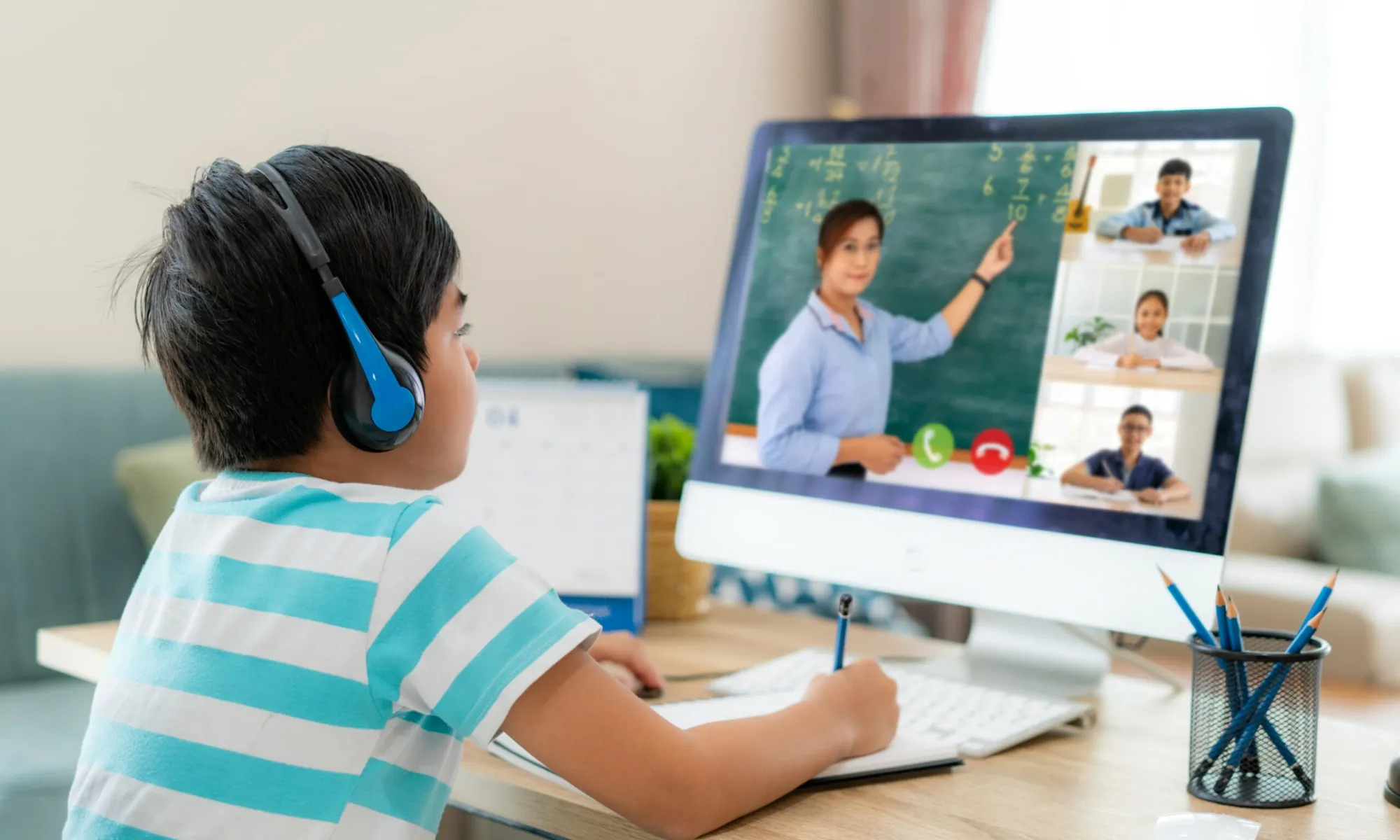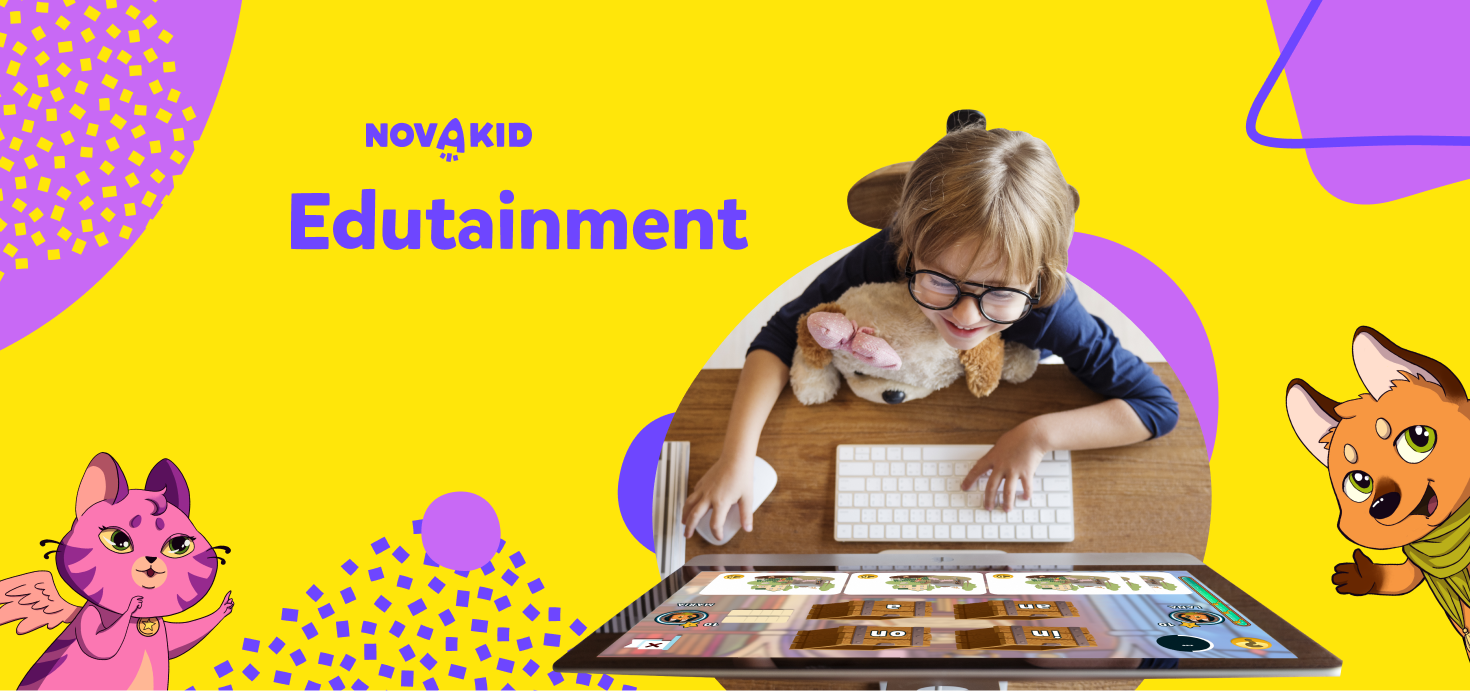- How to choose the right method of teaching English?
- New methods of teaching English – Novakid’s recommendations
Learning a new language may be challenging. For some people it seems natural, however for many it’s more of a struggle, and rather a long and difficult process. Luckily, there is no single method of teaching English that is always right.
How to choose the right method of teaching English?
Over the years different science, theories, and learning styles were developed in terms of teaching foreign languages. You won’t find the best, the one and only method of teaching English to kids or adults. Choosing the proper teaching style depends on students’ skills and abilities. So in this article, we listed some fresh ideas on how to learn a new language and how to choose the right method of teaching English.
Always remember to tailor the teaching method to your students’ interests and needs. Also, with the right motivation to learn English, the students are more likely to succeed. So in order to choose the right method of teaching English to adults or children, start with understanding why a person needs or wants to learn the language and then focus on the best technique to achieve their goal.
Our recommendations on new methods of teaching English include the same well-known approaches and a few rather unconventional ones, that are especially beneficial to kids. The modern English teaching methods that you’ll find here are suitable for both adults and kids, so you can learn a new language together. Are you ready to take a leap and finally succeed in learning a foreign language?

Why should you use easy English methodology for kids?
Parents who want their children to start learning English early, and for whom it is an important skill in their children’s education process, often wonder how to teach English to children. Is there a dedicated approach? Are there methods designed to help children be successful? Well, yes and no.
Choosing an easier methodology in teaching English to kids has some merit. Firstly, young children’s attention is hard to maintain. The usual lessons where students have to sit at their desks and listen to the teacher is not a perfect fit for them. Did you know that a child’s maximum attention span is about two to three times their age? So, a five-year-old child would have an attention span of around fifteen minutes.
Secondly, preschoolers memorize information differently than adults. They have a great mental trait called involuntary memory, which activates involuntarily when they’re occupied by games and creative activities.
Thirdly, perception mechanisms are also different for kids. Being emotional and eye-minded is their forte. They are attracted to things that interest them the most, such as bright colors, unusual shapes, secrets and mysteries.
Based on these factors, teachers try to use suitable methods and techniques when teaching English to children. Thanks to this, they can cater to their unique psychological and physiological needs.
However, there are some modern methods of teaching English that are beneficial to both kids and adults. So below we listed TOP 10 new, universal methods of teaching English. Find out how you can use them.
New methods of teaching English - Novakid’s recommendations
Task-based approach
The task-based approach in teaching English isolates individual skills and competencies in order to teach students things, which they actually need to know, in order to meet their goals and objectives.
The tasks in this method should be based on common real-life situations, which a student may encounter, i.e. being on holidays, while talking to foreigners in a hotel, at an airport or in a restaurant. So, a task-based approach would be teaching how to order a meal in a restaurant, how to book a hotel room, or perhaps more advanced tasks like critiquing a theater play. With this approach, the language taught revolves around the task itself, not the other way around.
For this method to work, teachers must understand their students’ needs and expectations well. Without that, it’s impossible to design lessons which will help students succeed in particular situations.
Teachers who decide to use the task-based approach should always ask themselves a question – why are my students learning English? The answer to that question will help develop a solid program that’s relevant to students.
Project-based approach
Another successful method to teach English is basing the teaching process on projects and project activities. The method was initially used mostly for high school kids and professional adults, but in the past 10 years, educators started using it with younger kids and preschoolers as well.
The project method is a research method. It is directed at developing language skills and creative thinking. After finishing each topic, students have to work on a project and “defend” it by talking about its contents in English. For example, thanks to elaborating on topics such as “my favorite food”, “my pet is…” or “in my house there is…” children have an opportunity to talk about what’s important to them personally. With the usage of graphics and photos, it is a very engaging and fun way of using English in practice, making it easier to memorize new vocabulary and phrases.
The Gamification method
Gamification is the most common tool to engage kids and facilitate learning. When kids are playing games they are in their element, they take to it like a duck to water. Games are attractive both in terms of organization and content.
Each game has rules that you need to adhere to, which helps develop organizational skills. All children know that the rules of the game are sacred. Games also allow kids to move around, interact, exchange items etc., and being active is natural for children. In terms of content, games are beneficial because you can use them to study any type of content. It will be easier for kids to learn through games, they will memorize words faster and even start using them spontaneously in their speech. Any game feels like real life to kids! And only the teacher knows how didactic and linguistically demanding it is.
Using quests in the teaching process
Quests are one of the most popular modern gaming tools. The name speaks for itself, as the word “quest” means there will be adventures. It already means that students will encounter challenges, riddles and mysteries that they have to solve by using English!
Usually, quests are built in a way that makes us follow a certain route divided into a few stages. Each stage gets us closer to the main goal – to get the objective. In order to get it, we need to do challenges and tasks in various stages of the quest by using the knowledge and skills that were learned during English lessons. Using quests in the teaching process motivates students to keep learning English.
Quests are also the reason why apps for learning languages, such as Duolingo, are so successful. The whole process of learning with Duolingo is based on various quests. There are new quests to be completed daily, and if we don’t want to lose a streak or wish to earn extra points, we have to keep consistency in learning.
The Total Physical Response (TPR) method
The Total Physical Response method is frequently used in teaching English to preschool kids. It engages the whole body in the learning process. The method is based on the coordination of language and physical movement. It works like this: the teacher gives their students commands only in the target language with specific body movements, while the students respond to them with full body movement.
The Total Physical Response method is an example of teaching a foreign language based on understanding. Listening to and reacting to the teacher’s instructions with movement serves two purposes – firstly, the child recognizes the meaning of words in a foreign language faster than in the case of traditional learning methods, and secondly, they passively, subconsciously learn the structure of the language itself.
In this method, grammar is not taught directly, but the child learns its rules involuntarily, while repeating commands, nursery rhymes or songs. In addition, the Total Physical Response method is a great way to learn problematic phrases and idioms that a child memorizes more easily when associating them with a specific, performed movement.
Interactive methods
Interactive learning is an integral part of teaching English to children and adults. You can do various activities together with your child, and you can both benefit from it. Be creative. Create a collage or a poster, do crafts, etc. You can also organize workshops for you and your kid, for example, making a salad or baking pizza, making soft toys or performing any activity together. E.g., it could be growing flowers, making a flower bed or a mini-garden.
Interaction in English between a teacher (or a parent) and a child should always happen during live communication and real-life situations. Such an approach helps kids and adults indirectly learn the language, while engaging in various activities.
Theatricalization or dramatization
Theater in English is many teachers’ favorite teaching method and many students favorite activity. Kids get especially immersed in the world of brave princes and princesses, evil witches and good fairies, magical creatures and talking animals. Kids are quickly drawn into the plot and easily remember the events, favorite characters, and their catchphrases.
At first, a teacher can read a fairy tale and discuss it with the students, look at the pictures or watch a cartoon, learn the keywords and then “narrate” the fairy tale later. But what kids love the most is to watch performances of their favorite scenes or tales with puppets, screens and decorations.
Preparing for a play immerses students into the English-speaking environment and a more natural use of language. That’s why the “immersion method” when kids are being spoken to in English right away helps develop their language skills, comprehension and contextual guessing in English. And this is exactly why it is so popular among educators who teach English to kids.
Spaced repetition technique
Spaced repetition is a technique that focuses on increasing intervals between previously learned and acquired material to retain maximum information. It can be successfully used in teaching both kids and adults.
According to scientific reports, it works mostly because frequent repetition helps our memory maintain existing knowledge. Once we learn something new, systematic revision at intervals helps us remember a more significant percentage of the material.
To make this teaching method work, you need to practice the previously learned vocabulary, phrases or grammar rules with increasing intervals. At first, it can be an hour, then a day, then once a week, then monthly etc. If you recognize a new piece of English information right away – you know it already very well. If not, you need to keep reviewing it more often.
Online learning
The latest trend in teaching and learning English in the XXI century is online learning. There are various types of online technology to consider, such as virtual tours, web-quests, and, of course, many flavors of gamification. When teaching English online, it’s important to implement a good combination of the aforementioned methods into the lesson and keep a good pace. Otherwise, our brains will get overloaded, and won’t remember much of anything.
Even if you use modern teaching techniques, such as online learning with a native speaker, it is important to constantly practice and acquire communication skills in English. Communication based on real-life situations is always crucial in the process of learning a new language.
For example, the native speaker teachers at Novakid online English school for kids aged 4-12, use exactly this teaching method. Kids casually speak exclusively English with their teachers in a stress-free environment, picking up new vocabulary and phrases very quickly. They are able to speak freely and confidently.
The natural approach
With this approach, students usually learn to speak before they learn to write in a foreign language. The natural approach focuses on spontaneous interactions in the target language. It requires either a simulation of real-life settings in a classroom environment or an actual contact with foreigners. The best way to achieve it? Go abroad for vacation or a language course, make some foreigner friends, or find yourself a native speaker teacher. This approach is ideal for individual students or small groups, but it won’t really work in a chaotic environment. The student should always have the opportunity to speak freely in this method.
Did you like this content? Which of the new modern methods of teaching English feel most natural to you? Let us know in the comments section. 🙂










































I am not sure where you’re getting your information, but great topic. I needs to spend some time learning much more or understanding more.
Thanks for magnificent information I was looking for this information for my mission.
I’m not sure where you’re getting your information, but great topic. I needs to spend some time learning more or understanding more.
Thanks for excellent information I was looking for this info for my mission.
I needs to spend some time learning more or understanding more.
Good topic to talk about
Thanks!
I definitely loved this article, I really found out what method I should use with my students, however it’s true that se need to take into account my students background and the school syllabus as well. Thanks a lot for such an amazing erticle.
Thank you so much for greatly useful information
Excellent and updating topic.
Thank you for this useful information